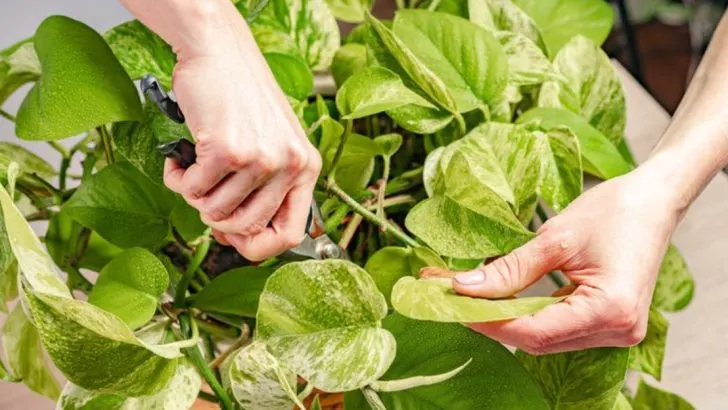Pothos plants thrive with the right pruning techniques, and a few strategic cuts can make all the difference in boosting growth and fullness. Without proper trimming, they can become leggy and sparse, losing their lush, trailing appeal.
Regular pruning encourages new growth, prevents tangling, and helps shape the plant to fit your space. Knowing where and when to snip ensures that your pothos stays healthy, vibrant, and bushy year-round.
With the right approach, you can transform a thin, scraggly pothos into a full, cascading beauty that enhances any indoor space.
Trim Dead Leaves
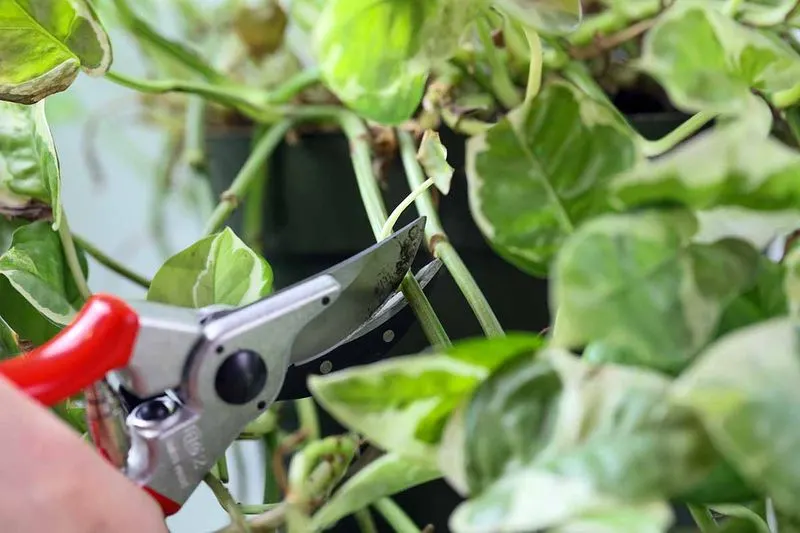
Dead leaves are a common sight on pothos plants. Removing them regularly is crucial. With a pair of sterilized scissors, snip off any brown or yellow leaves. This prevents the spread of disease and redirects energy to healthy growth. Regular checks ensure your plant stays vibrant. A well-trimmed pothos appears fuller and healthier. Keep an eye out for leaves that look dull or lifeless. By focusing on healthy foliage, your plant will flourish. Embrace this simple step for robust growth. Healthier leaves mean a more visually appealing plant.
Cut Just Above a Node
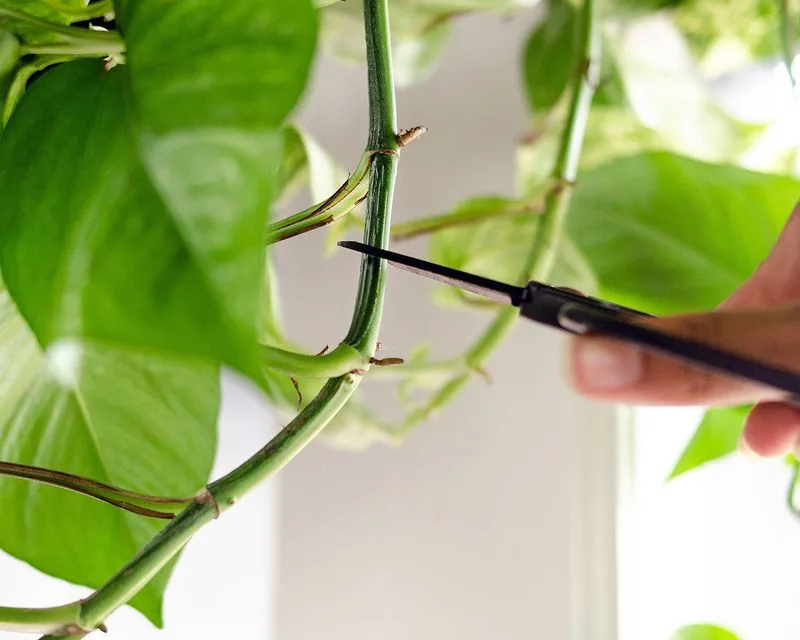
Nodes are the key to new growth. When pruning, cut just above a node. This encourages the plant to branch out, creating a fuller appearance. Each node is a potential growth point, so target these areas. Use sharp scissors to make a clean cut. Avoid tearing the vine as it can damage the plant. You’ll notice new shoots emerging from these points over time. Regularly inspect your plant to identify prime cutting spots. This technique not only enhances growth but also maintains the plant’s structure. A little precision goes a long way.
Sterilize Your Tools
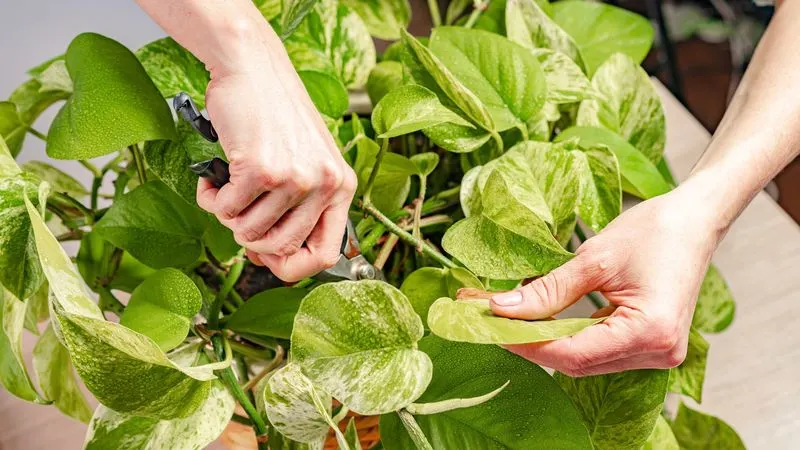
Clean tools are essential for plant health. Sterilize scissors or shears before each use. This prevents disease transmission. Use rubbing alcohol or a similar disinfectant. Dip or wipe the blades thoroughly. Proper tool hygiene ensures that your pothos remains disease-free. Dirty tools can introduce harmful bacteria. Make sterilization a routine part of your pruning process. This small step can have a big impact. Your plant will thank you with healthier growth. Maintaining clean tools is an easy way to promote plant longevity. It’s a habit worth cultivating.
Prune During Active Growth
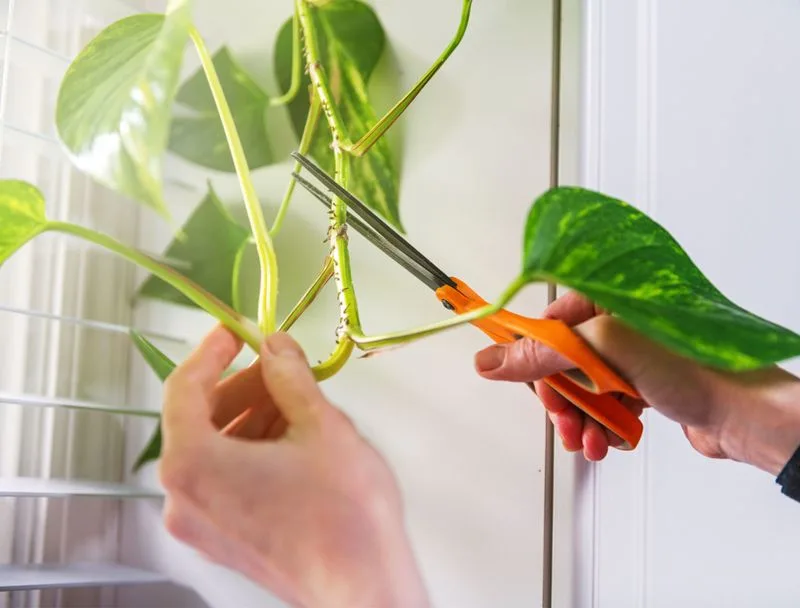
Timing is everything when it comes to pruning. The best period is during spring or summer. This is when pothos experience active growth. Pruning during this time encourages rapid regeneration. New shoots will emerge more quickly. Avoid pruning in dormant seasons like winter. Doing so can stress the plant. Focus on warmer months for the best results. The plant’s natural energy boost aids in recovery. This strategic timing ensures optimal growth. Your pothos will reward you with lush new leaves. A little planning can yield significant benefits.
Remove Leggy Vines

Leggy vines can detract from your plant’s appearance. These are vines that grow long but sparse. Cut them back to encourage bushier growth. Focus on the parts of the vine that seem too extended. Regular pruning of these areas will stimulate new growth. This keeps the plant looking dense and vibrant. Shorter, fuller vines are more visually appealing. Use sharp tools for clean cuts. Avoid leaving stubs that can wither. With consistent attention, your pothos will thrive. This technique will lead to a more attractive plant. It’s all about balance.
Feed Your Plant After Pruning
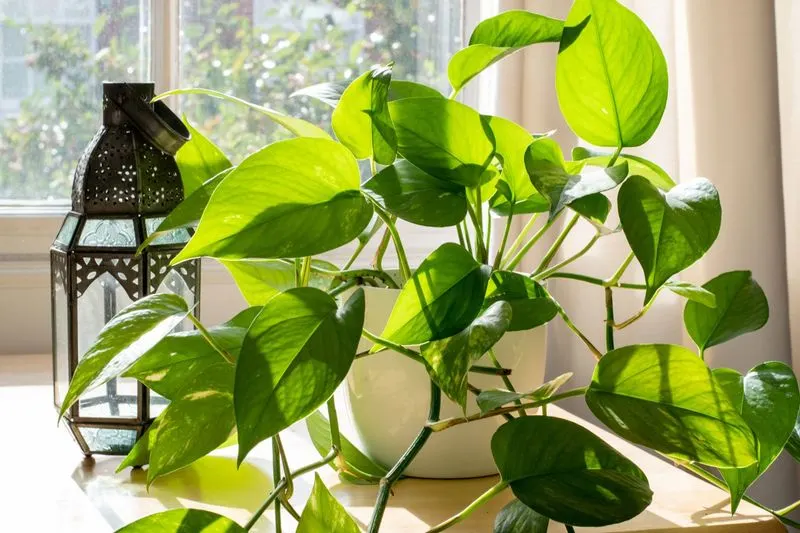
Post-pruning care is crucial for recovery. Fertilizing your pothos after trimming boosts new growth. Use a balanced liquid fertilizer. This provides essential nutrients for regeneration. Apply it with water, following package instructions. Be mindful not to over-fertilize, as this can harm the plant. Feeding supports the plant’s healing process. Nutrients help develop stronger, healthier leaves. Regular feeding after pruning aids ongoing growth. It’s a simple step to enhance results. Your pothos will bounce back more robustly. This habit contributes to long-term vitality. Think of it as a rejuvenating boost.
Monitor Sunlight Exposure
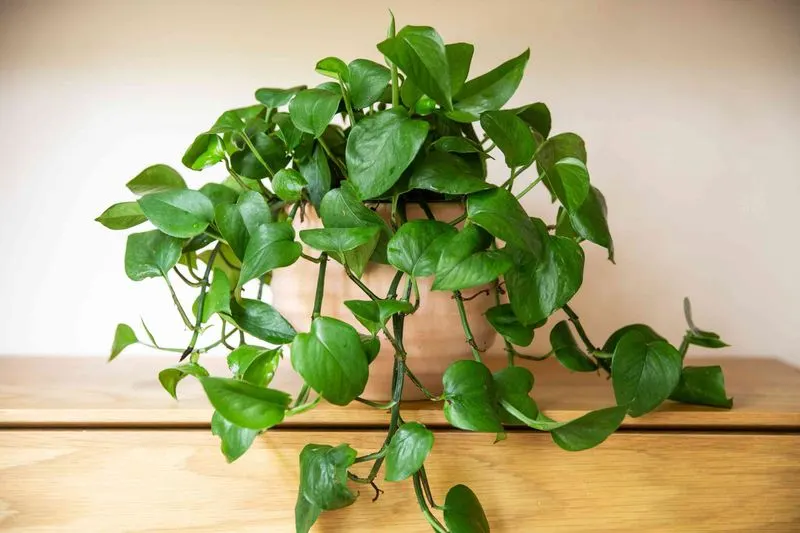
Sunlight plays a vital role in plant health. Ensure your pothos gets the right amount of light. Too much can scorch leaves; too little can hinder growth. Place it near a bright window, but avoid direct sun. Adjust its position if you notice leaf burn or yellowing. Pruning can affect light absorption. Newly exposed areas might need repositioning. Monitor light levels throughout the day. Consider using sheer curtains to diffuse harsh rays. This helps maintain healthy foliage. Proper lighting keeps your plant thriving. Balance is key in light management.
Rotate Your Plant

Rotation is essential for even growth. Turn your pothos regularly to ensure all sides receive light. This prevents uneven development. A plant leaning towards the light looks unbalanced. Regular rotation encourages symmetrical growth. Aim to rotate the plant every few weeks. This simple act promotes a uniform appearance. It also helps prevent one-sided growth. A well-balanced plant is visually pleasing. This technique is easy to incorporate into your routine. It’s a small effort with noticeable results. Your pothos will grow evenly and beautifully. Embrace the art of rotation.
Let the Soil Dry Out
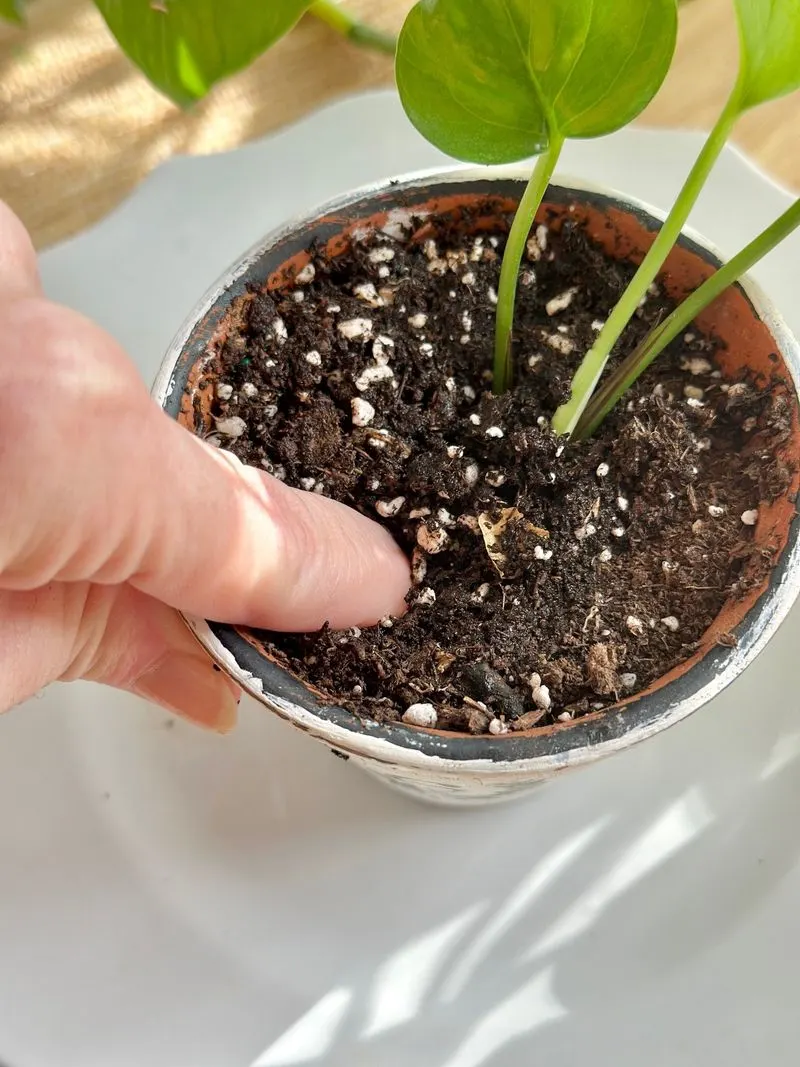
Water management is crucial for pothos health. Let the soil dry before watering again. Overwatering can lead to root rot. Check the top inch of soil with your finger. If it feels dry, it’s time to water. This practice prevents waterlogged roots. Dry periods encourage root growth. Proper hydration maintains overall health. Be consistent with your watering schedule. Adjust based on the season and humidity. This approach prevents common watering mistakes. A well-watered plant is a happy plant. Monitoring soil moisture is key. It’s a simple way to ensure vitality.
Encourage Aerial Root Growth

Aerial roots provide additional support. Encourage their growth for a stronger plant. Use a moss pole for the vines to cling to. This mimics the plant’s natural environment. Secure the vines gently to the pole. Over time, aerial roots will develop. This adds stability and encourages upward growth. It’s a natural way to support the plant. Aerial roots contribute to a fuller appearance. They help vines reach for light. This technique enhances the plant’s structure. It’s a creative way to promote health. Encourage nature’s design for a thriving plant.
Use Clean Water
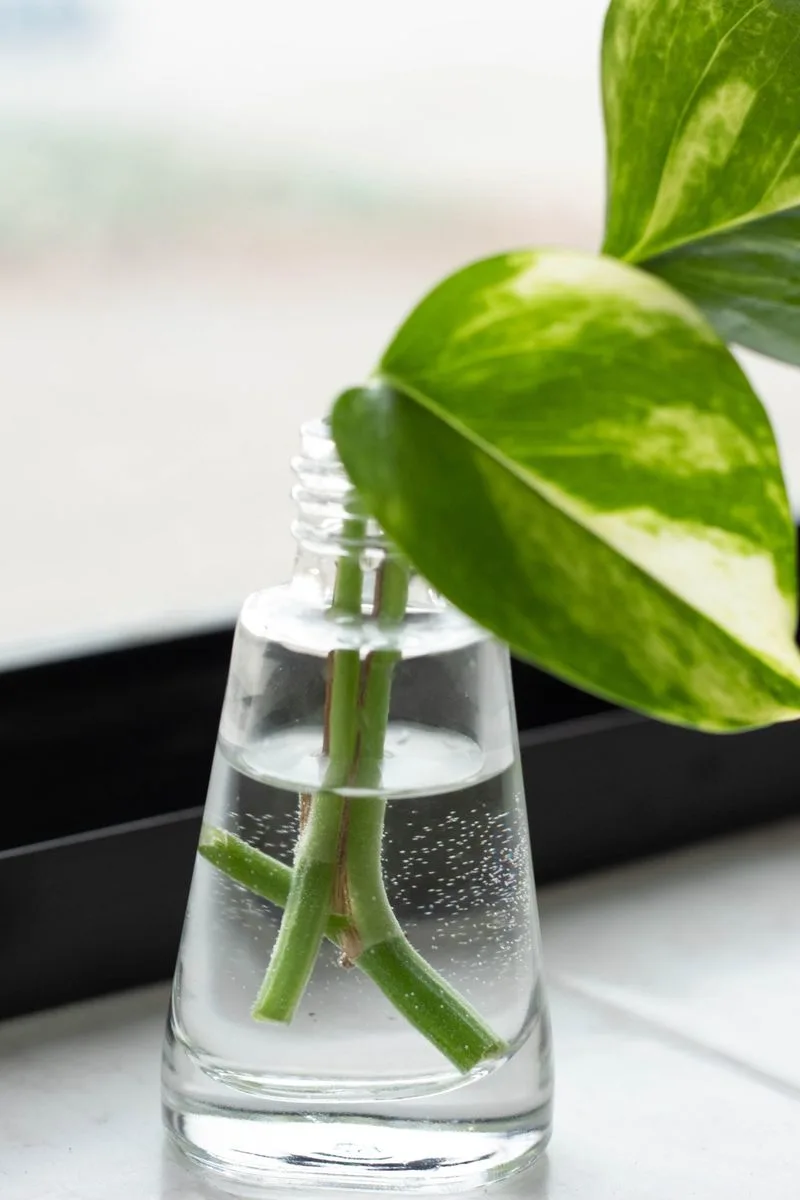
Water quality affects plant vitality. Use clean, filtered water for your pothos. Tap water can contain minerals and chemicals. These can harm the plant over time. Let tap water sit for 24 hours to dechlorinate. Alternatively, use rainwater or distilled water. Clean water promotes healthier root systems. It supports vibrant foliage and growth. Regularly assess your water source. Adjust as needed for optimal plant health. This consideration is often overlooked. Yet, it’s crucial for long-term success. A small change can yield big benefits. Prioritize water quality for your pothos.
Pinch Off New Growth Tips
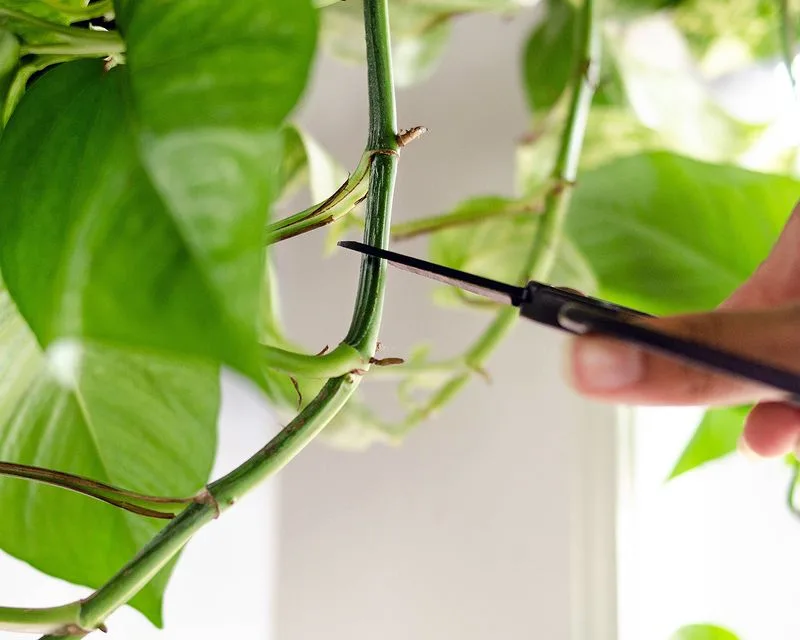
Pinching promotes bushier growth. Gently remove the tips of vines. This encourages side shoots to form. More branches lead to a fuller appearance. It’s a simple technique with significant impact. Use your fingers for precision. Regular pinching maintains the plant’s shape. It also controls its size. This keeps the pothos looking tidy. Frequent checks are beneficial. New growth tips are easy to spot. Incorporate pinching into your care routine. Your plant will respond with dense foliage. This technique is easy and effective. It enhances the plant’s natural beauty.
Recognize Signs of Stress

Stress signals need attention. Yellowing leaves or stunted growth are indicators. These signs suggest a change is needed. Evaluate factors like light, water, and nutrients. Stress affects overall health and appearance. Address issues promptly to prevent further damage. Regular monitoring helps catch problems early. Adjust care routines as necessary. Resilience improves with attentive care. Understanding stress signs leads to better outcomes. This knowledge empowers you. Your pothos will thrive with timely interventions. Healthier plants are more vibrant. Stay alert and responsive to your plant’s needs. It makes a difference.

